Lunacy: A form of insanity once believed to come with changes of the moon; insanity generally.Literally: Moonstruck persons. Intense folly….
Any, or indeed all of these definitions might have applied to us as, at ten o’clock and in darkness, we neared the summit of Agios Dikaios, at 1,181m the highest mountain in Western Crete.
I’ve used these lines by Christina Rossetti before:
“Does the road wind up-hill all the way?
Yes, to the very end.
But is there for the night a resting place?”
We certainly hoped so, as we planned to spend the night on or near the top, and next morning walk down to Moustakos having traversed the mountain. We had left Elos two hours earlier, after a typical Cretan meal in the excellent Kamares restaurant – fava, boureki, goat in the oven with chestnuts, and, inevitably, raki.
Walking through the villages’s famous chestnut forests, in A. E. Coppard’s expressive words “it was a calm evening, the sun was on its downing…” before came the long and winding track of 8 km, with a relentless climb of 650m to the summit, accompanied all the way by sonorous goat bells of differing pitches.
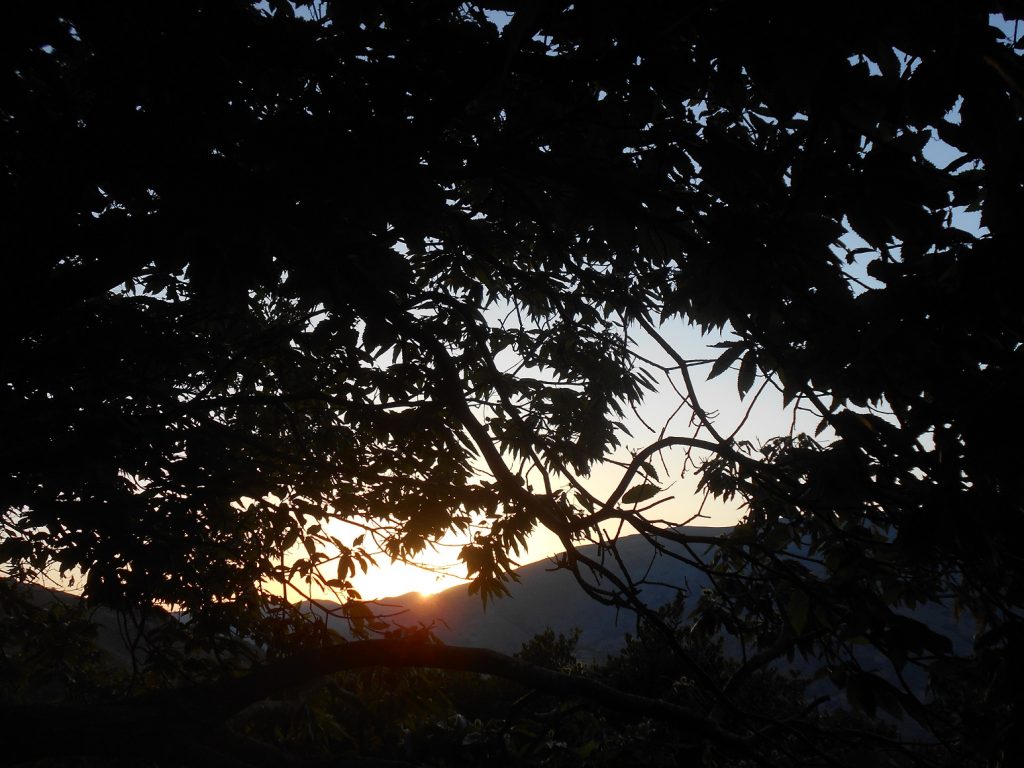
This mountainous area is a raptor sanctuary, home to Golden & Bonelli’s eagles, Peregrine falcon, Honey buzzard, rare Bearded and more common Griffon Vultures. An Information Board we passed told us more, and what to watch for, although we only saw four high-circling Griffons.
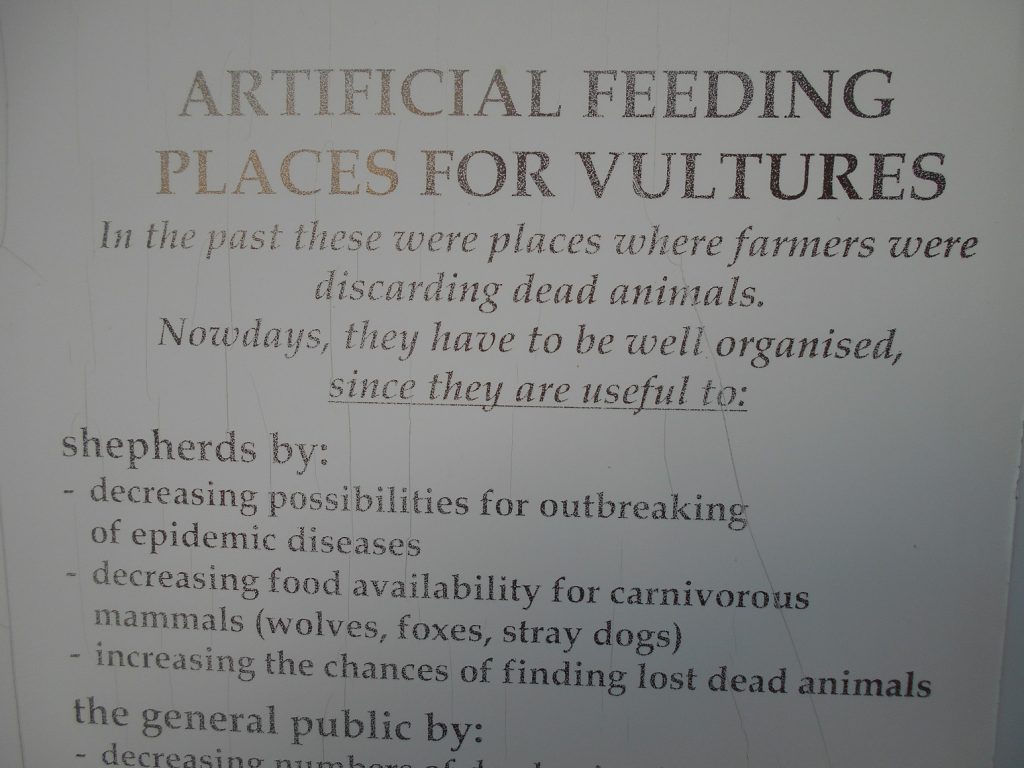
Our expedition was purposely planned for the night of the July full moon, which rose behind us as we passed the turning south to Moustakos, next day’s descent route; for some time I was followed by a moon shadow, which as elusive as Peter Pan’s, was impossible to catch, on camera.
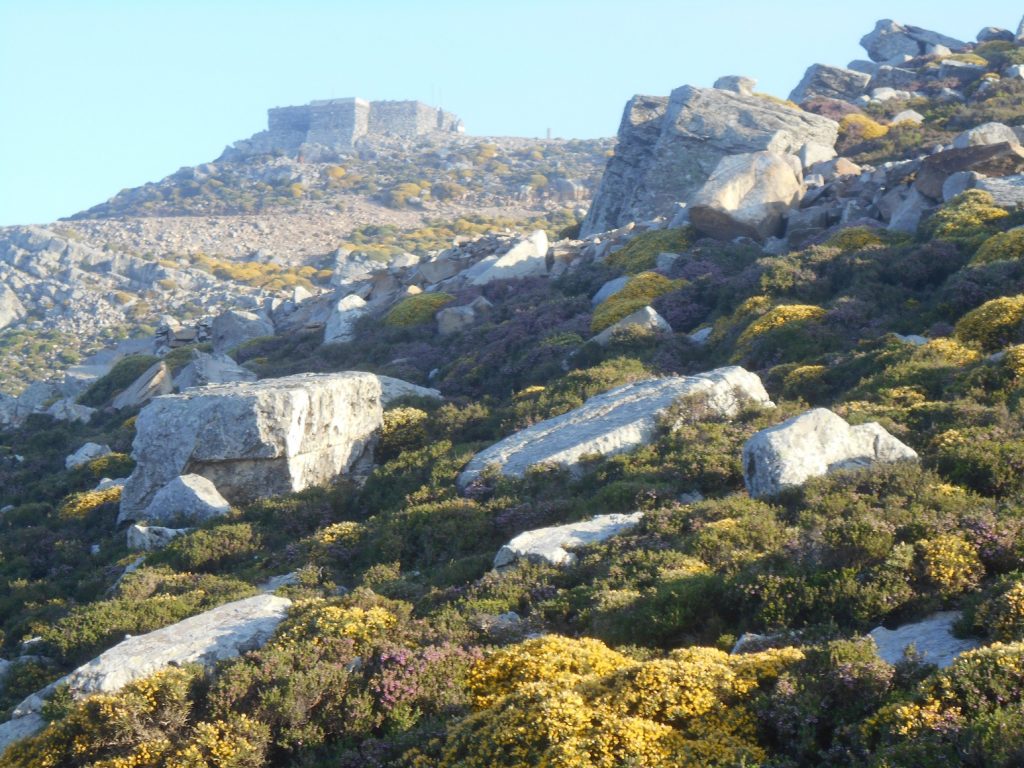
Far below was Kantanos, and a beam of light flashing at regular 6-second intervals was the lighthouse on Paleochora’s island, 15 km and a thousand metres below us. Closer, the Radar Station above Sklavopoula was brightly illuminated. And so to the summit, with a strong breeze, less so inside the high walls enclosing the tiny church of Agios Dikaios, but warm and windless inside. Hot drinks, soon followed by ouzo and more raki, both to keep out the cold …
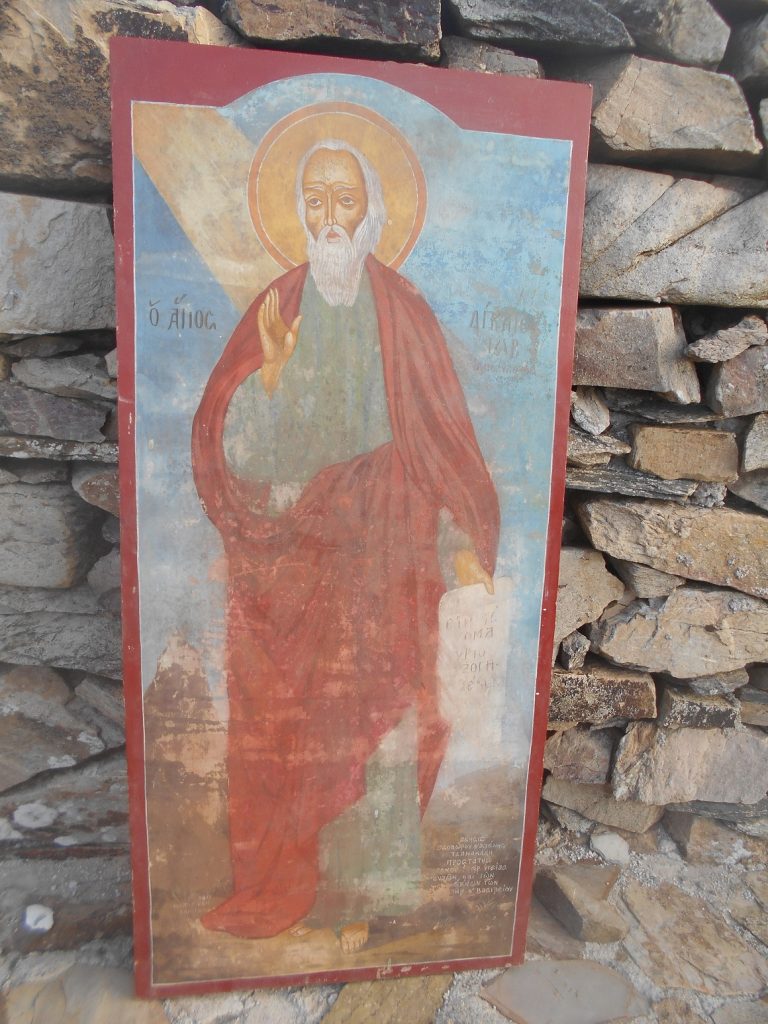
Towards midnight the planet Jupiter was aligned almost horizontally with both Saturn (but not Mars!) and the moon – apparently a rare occurrence – but it was too cold to appreciate it for long. I slept fitfully in the lee of the church’s north wall, but was awake and up well before dawn. Then towards 6am came “the morn in russet mantle clad,” the sun climbed surprisingly quickly out of banks of mist, and morning had broken.
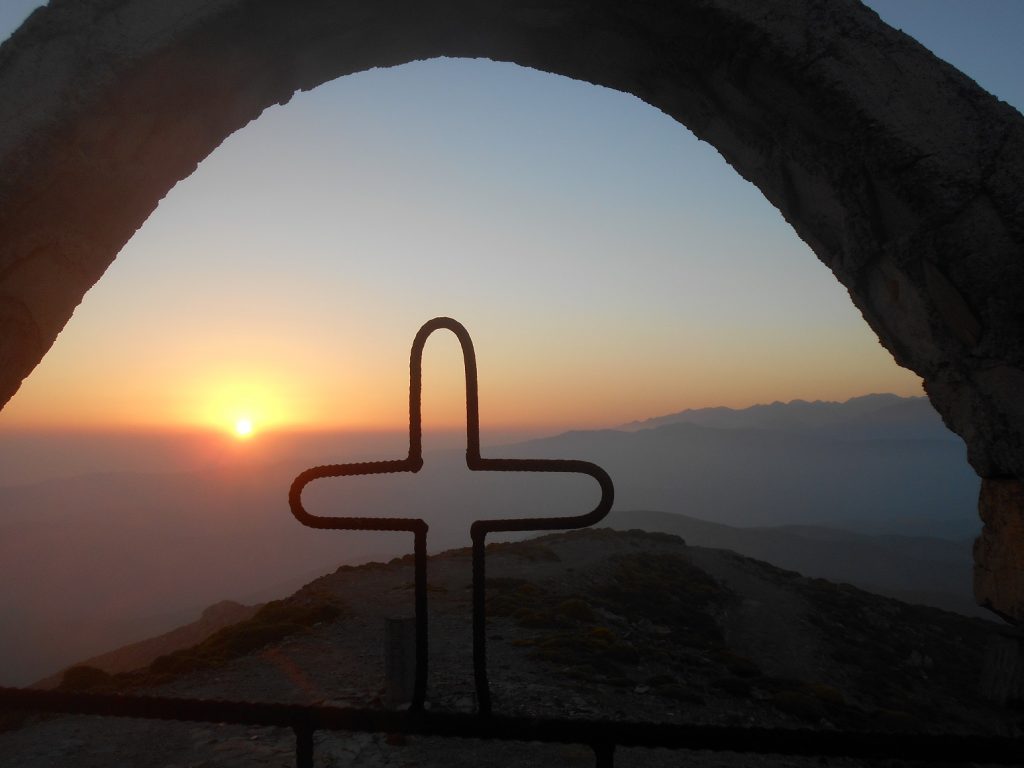
Sadly, the mist precluded our much anticipated views over Elafonisi and the west coast, and to the north, where we thought we might see Antikythira and even Kythira islands beyond Gramvousa. The White Mountains were hazy and indistinct, but Michelle and I could identify Agios Zinas, the 1331m peak where we had spent the night of a Blue Moon (ref. Explore! August 2015)
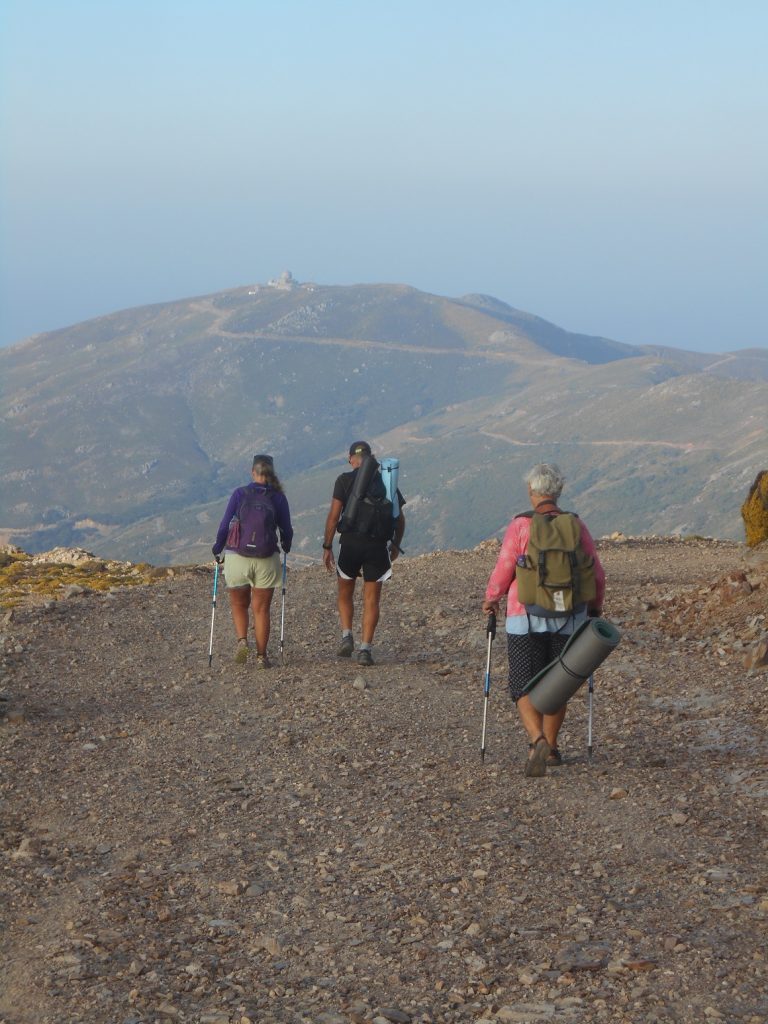
We left at 7.30am, returning in half an hour to the track junction, with sights unseen the previous evening. The rough serpentine road took us down the wide valley, which later narrowed to become the delightfully attractive Kousiakiotiko Gorge, and, still early morning, was filled with richly coloured oleanders, birdsong, and the ever gliding stream.
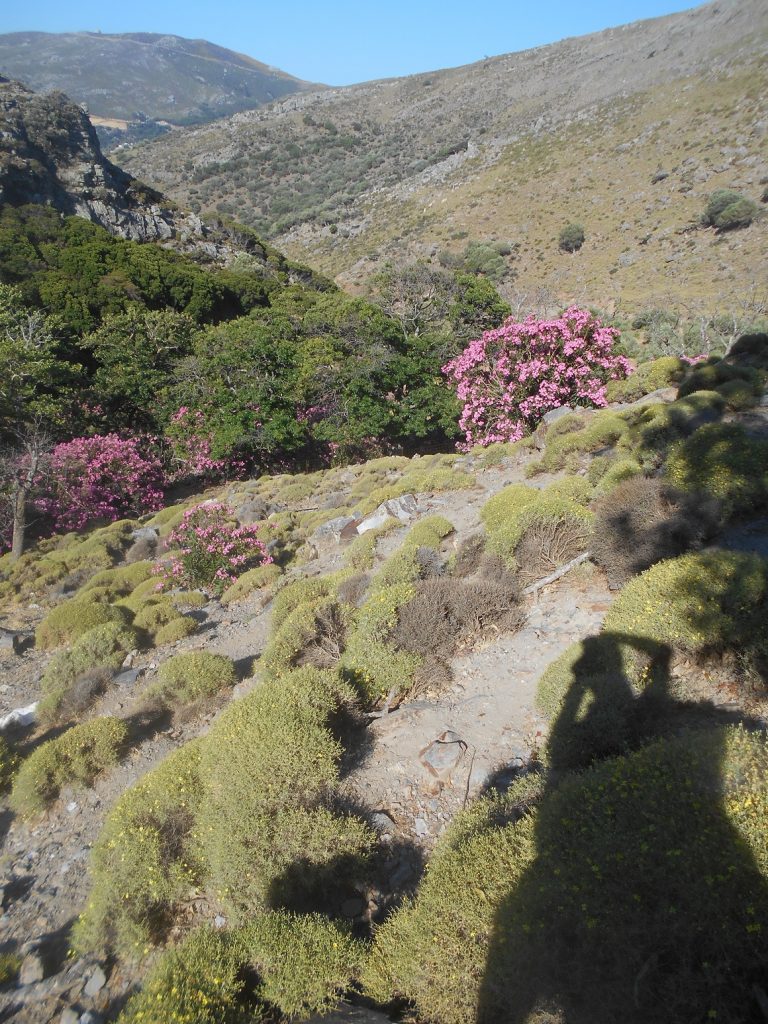
Dogs barked as we entered, then walked into and through Moustakos, where nothing stirred.
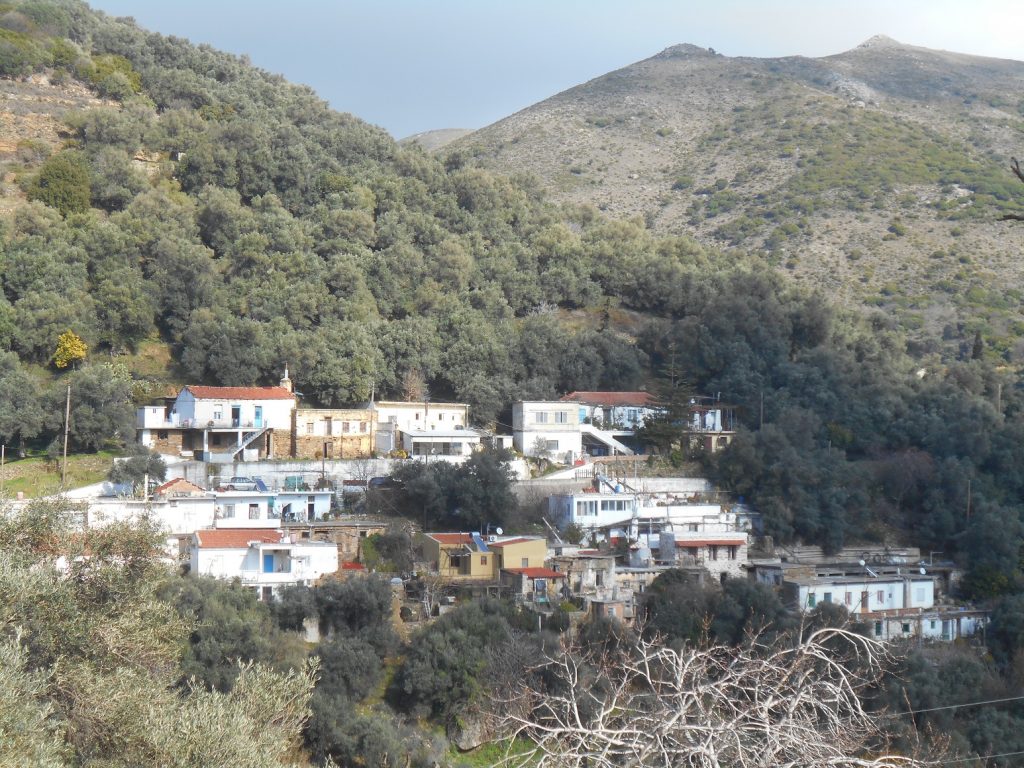
A pre-arranged taxi took us the 18 km back to Paleochora. In less than eighteen hours we had incorporated many “moments of being” which will stay long in the memory; and every time I listen to Mussorgsky’s orchestral piece, I’ll be reminded of the night of the full moon we spent on the summit of Agios Dikaios …..

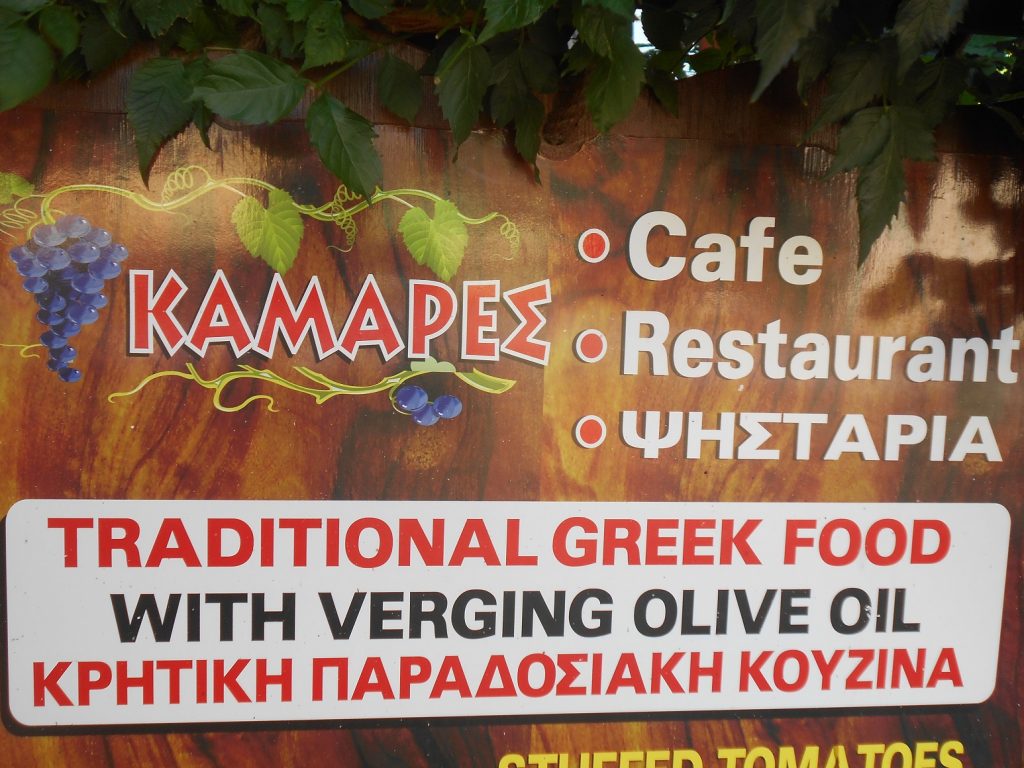

1 comments
Kalispera Bob, I did the hike in November 2017.
From the Castani village Élos over the peak Agios Dikaios to the village Moustatakos to Voutas.
At the top of Agios Dikaios I almost got blown away and had to put on everything I had with me.
It is a beautiful and lonely hike.
In Voutas at the Platia I stopped at the Kafenio and then hitchhiked to Paleochóra.
In the 1970s Voutas was a lively village with more than 600 inhabitants and at the same time the economic center of the region with many settlements like Kalamou, Lagkadas, Kitiros, Archandiko.
There were many stores, a blacksmith and a saddlery, water and oil mills and 8 kafenea. There were also police, a doctor and a cinema. The village school had over 100 students.
After the 1970s, many residents left the village and moved to the coast, as elsewhere in Crete, especially to Koundouras, to build greenhouses for tomatoes. The inhabitants of Voutas who were looking for work hoped for a better life in the big cities like Chania, Heraklion or Athens.
Consequently, many stores in Voutas closed. Nothing is left of the former life and “prosperity”, no store, no doctor, no police, no cinema. Except for 1 kafeneo, 1 kafenpantopoleion and a tavern, desolation reigns in the “main street”. The former stores and kafenea are all barricaded with shutters.
In Voutas still live 50 permanent inhabitants. Except for the kafeneo owner, I have seen no one.
It is a lonely world up there around Voutas. The impressive Pelekaniotis gorge, the mountains, the many small hamlets, the vultures, the silence…
Many greetings from Hamburg, kv